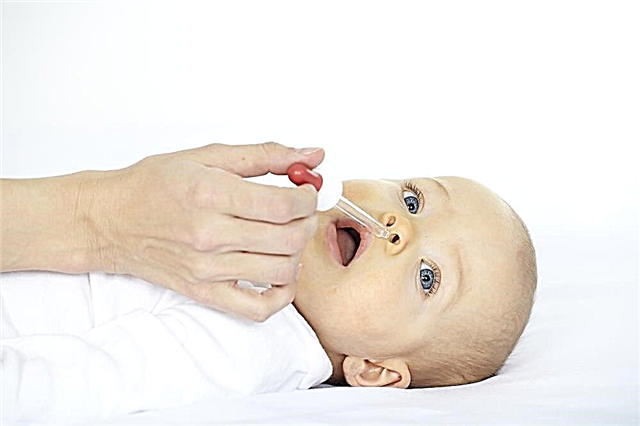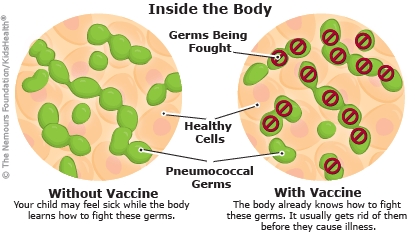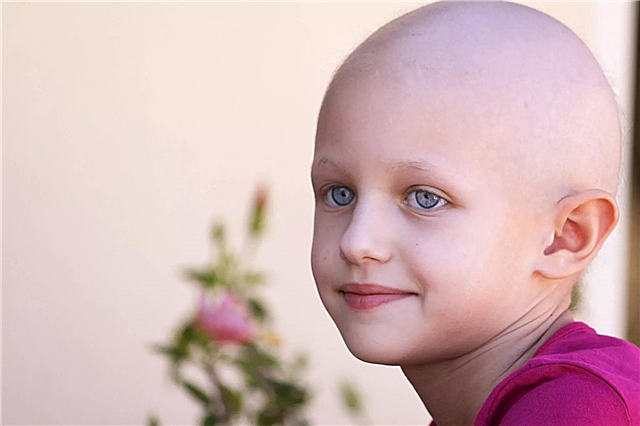In children, allergic disorders often develop as a result of exudative-catarrhal (allergic) diathesis. Today, this type of diathesis is diagnosed in about 70% of infants. Why does this condition develop in so many children in the modern world?
The human constitution is a set of relatively constant functional and morphological features determined by age, heredity, and intense long-term exposure to environmental factors. These qualities determine the functional potential and reactivity of the organism.
Diathesis is a feature of the body when there is a tendency to the occurrence of a certain group of diseases. This predisposition, under some circumstances, can turn into a disease.
Exudative-catarrhal diathesis in children (ECD) is a constitutional anomaly, implying a predisposition to prolonged inflammation, the occurrence of allergic reactions, the development of lymphoid hyperplasia (excessive cell proliferation), a disorder of water-salt metabolism, a kind of damage to the mucous membranes and skin.
Epidemiology
The manifestation of ECD is usually associated with a pathological immune response to the ingestion of a foreign food protein. Typically, this abnormal response to food components is due to the infant's immaturity, enzyme deficiencies, and poor liver function. In 50 - 80% of infants, this type of constitutional anomaly occurs. In particular, this condition is expressed during the introduction of complementary foods, as a result of which the children's gastrointestinal tract undergoes an increased functional load.
Causes
EKD occurs in children and adults. Allergies to food are considered as predisposing factors for the development of this pathology.
Experts associate the emergence of ECD with an immature or weakened defense system. In adults, diathesis develops according to a more complex mechanism, but it is usually also associated with reduced immunity. The hereditary tendency of the body to skin diseases (dermatitis, eczema), bronchial asthma, gastritis provokes metabolic disorders, which is associated with the occurrence of an allergic reaction.
When numerous factors are combined (infection, unhealthy diet, stress, gastrointestinal disorders, unfavorable environmental situation), any irritating substance that enters the child's body can lead to an instant release of histamine into the bloodstream. Due to this reaction, a skin rash appears on various parts of the body, which is accompanied by inflammation.
Improper nutrition of the mother and her use of medications during pregnancy can cause this pathology in infants. Toxicosis of the expectant mother also has a negative impact.

The mechanism of development of the disease and its manifestations (pathogenesis)
EKD is the initial stage in the development of skin diseases (seborrheic and atopic dermatitis, eczema, sometimes psoriasis). Diathesis manifested in children is usually caused by the body's hypersensitivity to various allergens - household dust, animal hair, certain foods, etc.
The etiology and pathogenesis of ECD are not fully understood. It will take a series of medical studies to establish the cause. In the scientific literature, there are several main factors that affect the appearance of diathesis:
- genetic predisposition;
- toxemia (a large amount of toxins in the body) in the 1st - 2nd trimester of pregnancy;
- bad ecological situation;
- taking certain medications during pregnancy;
- erratic diet of a pregnant woman;
- some foods used during breastfeeding (milk, eggs, fruits, pickles, honey, etc.);
- diseases of infectious etiology.
Even during development inside the uterus, the fetus may develop hypersensitivity to various allergens circulating in the mother's body. This phenomenon is referred to as Ratner congenital allergy. After birth, allergens enter the body with breast milk and complementary foods. Severe allergies can be triggered by overfeeding your baby.
Potential allergens are usually non-heat-treated foods (raw seasonal fruits and vegetables, cow's milk, etc.), fish, seafood, nuts and other foods that retain their allergenic properties even with high-quality heat treatment. The body is adversely affected by excessive consumption of spicy foods, sweets, a hectic diet, and the introduction of exotic products into the menu.
Symptoms
Usually, the symptoms of EKD in children are red patches on the cheeks, which are then covered with gray-yellow crusts. In the area of damaged skin, pain and itching are present, which causes severe discomfort.
Lack of digestive enzymes can cause ECD in children. Scabs on a baby's head are one of the early signs of EKD. These crusts first turn red, then turn into moist spots. Itchy skin lesions can occur where the arms and legs are bent. These nodules sometimes spread throughout the body, forming lesions. Conjunctivitis may develop, burning sensation under the eyelids and swelling of the affected areas. The skin color can vary from pale pink to dark red.
Symptoms, namely skin rashes, disappear when the first allergic reaction occurs. However, EKD often becomes protracted (chronic) with regular contact of the child with the allergen. Itching and burning sensations intensify, become painful, areas of damaged skin are poorly restored and are severely dry.
When ECD is triggered by food allergens, primary skin rashes appear 20 to 30 minutes after ingestion. As a result of persistent itching, the child becomes irritated and does not sleep well, and this further aggravates the situation and increases the symptoms.
Against the background of EKD, signs of damage to the gastrointestinal tract are sometimes observed, bronchitis, pharyngitis, rhinitis may also occur.

EPC types
There are three types of EKD:
- atopic,
- autoimmune,
- infectious and allergic.
Atopic diathesis is characterized by an excess of IgE (the main indicator of the allergic profile) and a lack of IgA (an antibody of the primary immune response). Also with this type of phagocytes (cells of the defense system). The presence of genetic allergic diseases in mom and dad is noted.
Autoimmune diathesis is characterized by the following features:
- high susceptibility of the skin to ultraviolet radiation;
- in the blood a high degree of gamma globulins (a protein with a protective function);
- high levels of IgM (antibodies that provide an early immune response).
Infectious-allergic diathesis has the following differences:
- for a long period, there is an elevated temperature after infection with an infection;
- the course of the disease is characterized by pain in the joints and heart;
- the risk of developing vasculitis (a disease that affects the blood vessels) increases.

Features of infant ECD
In newborns, EKD often occurs due to the illiterate feeding and nutrition of a woman during pregnancy. Poor environmental conditions are also the reason.
Various factors can trigger the development of ECD in an infant. These can be insect bites, food products, cigarette smoke, animal hair, cosmetics, household chemicals. External symptoms of diathesis are red cheeks. Internal manifestation - problems with lymph and glands, nervous disorders.
Diathesis in infancy is very insidious. It can be a provocateur for the development of chronic diseases - neurodermatitis, atopic dermatitis, psoriasis, eczema.
Parents should respond promptly to pathological symptoms and take appropriate action. The main task of the mother is to follow a special diet for breastfeeding. It is necessary to exclude from the menu red vegetables and fruits, marinades and smoked meats, eggs, spices, honey, chocolate. With artificial feeding, the correct choice of formula is important. It must be hypoallergenic.
Due to the fact that EKD can affect mucous membranes, preventive measures should be used - elimination of dysbiosis with prebiotics and probiotics containing elements useful for the gastrointestinal tract flora. They stimulate and restore her vital activity. It is necessary to carefully observe the baby's hygiene, daily wet cleaning in the child's room, and choose the right washing powder.
Do not treat yourself. If the first signs of EKD are detected, show the child to the pediatrician. He will competently select medications.

Consequences and complications
EKD has an extremely negative effect on the child's body. It leads to frequent respiratory diseases, weight loss, the development of dysbiosis, hypersensitivity to various irritants, which, in turn, provokes the onset of severe allergies.
Complications of EKD are more often associated with skin infection due to penetration of harmful organisms into the wounds. These lesions are formed in the areas of the comb due to unbearable itching. Ulcers appear on the skin, crusting over time. When bacteria penetrate into the wounds, their suppuration develops.
Sometimes EKD becomes the culprit for the development of a disease of allergic etiology:
- hay fever (reaction to plant pollen),
- psoriasis,
- bronchial asthma,
- allergic bronchitis,
- atopic dermatitis,
- allergic rhinitis.
If EKD is not treated in childhood, the likelihood increases that over the years the pathology will transform into neurodermatitis.

Diagnostics
To diagnose ECD, a thorough examination of the child is required. The main factors for a correct diagnosis are: symptoms of pathology, information received from the patient, about previous illnesses. Of particular importance is the presence of family members with allergies.
The main criteria for the diagnosis are:
- genetic predisposition;
- identification of an allergen among drugs, chemicals, food, etc .;
- determination of the level of development of allergies;
- increased IgE levels;
- an increase in the number of eosinophils in the blood, sputum, saliva, nasopharyngeal mucus;
- lack of T-lymphocytes and IgA;
- the presence of secondary acute bronchitis with obstruction.
Before starting treatment, it is necessary to carry out a differential diagnosis. It is necessary to distinguish manifestations of ECD from those of other diseases.
The following pathologies are taken into account:
- neurodermatitis;
- eczema;
- dermatitis;
- psoriasis;
- tuberculous intoxication.
If the diagnosis is incorrect, then the therapeutic action will not bring a positive result.

Treatment
If you organize the treatment of ECD correctly, then it passes quickly enough.
The child must be provided with hypoallergenic life and food, skin care.
| Therapy method | Description |
| 1. Hypoallergenic life | Removal from the children's room of all potential factors that violate microecology (household chemicals, pets, carpets, flowering plants, etc.). Should be excluded:
The child's underwear should be made of cotton, linen. Do not dress your child in coarse clothing. To wash things with special hypoallergenic agents. Walk daily in diffused sunlight. The child should sleep in a separate room on cotton or linen underwear. |
| 2. Bathing and skin care | Bathe your baby daily. The water should be comfortable (temperature 35 - 36 ° C) and dechlorinated. The optimal bathing time is 20 minutes. Use for bathing slightly alkaline or indifferent soaps and shampoos with a neutral pH that do not contain fragrances and dyes; bathe your child with soap 1 - 2 times a week; do not use washcloths, rub the skin, use soaps with antimicrobial action. After bathing, wet the skin (do not wipe) with a towel; apply an emollient neutral cream on the skin; moisturizers need to be applied in such a way that the skin stays soft throughout the day. |
| 3. Treatment of local skin changes | Use special cosmetics to soften the crusts on the head and remove them during bathing for 3 - 4 sessions with a damp sponge, moving along the hair growth. Do not injure the scalp. Do not use diapers or put them on for a short period of time. Cut nails short from the first weeks of life to prevent scratching and peeling of crusts. Wear cotton mittens at night to reduce uncontrolled combing. |
| 4. Hypoallergenic food | Long-term preservation of natural feeding and careful adherence to the diet of a nursing mother. When artificial feeding, use hypoallergenic mixtures based on partially hydrolyzed protein. Introduce complementary foods in accordance with the general scheme, paying special attention to dairy-free vegetable dishes as the main complementary foods. In the event of functional digestive disorders, apply an appropriate dietary correction. Avoid eating foods containing allergens. Dishes based on whole cow's milk and beef should be introduced no earlier than 2 - 3 years. |
| 5. The use of drugs | Antihistamines are used to eliminate the allergic reaction (Loratadin, Cetirizine, Levo-cetirizine, etc.). For relief of respiratory manifestations, inhalation drugs (for example, Intal) are used. In order to bind and remove allergens from the body, enterosorbents (Polysorb, Laktofiltrum, Enterosgel) are used. Treat the affected skin with zinc ointment. |
Prevention
Preventing ECD is better than treating associated diseases. To this end, it is necessary to adhere to a balanced diet and a correct daily regimen.
Allergenic foods (chocolate, nuts, citrus fruits, red vegetables and fruits) should be excluded from the diet.
Excessive consumption of certain foods during pregnancy will lead to the accumulation of allergens in the body, which will affect the condition of the baby.
Other prevention methods:
- regular monitoring of the woman's condition during pregnancy (scheduled consultations);
- timely detection and treatment of diseases in the expectant mother;
- adherence to a rational and hypoallergenic diet during pregnancy;
- natural feeding should be as long as possible;
- introduce new foods into the child's diet gradually and carefully;
- diapers, clothes, bed linen should be made of cotton or linen;
- use baby soap and washing powder without allergens;
- daily massage, hardening procedures and gymnastics;
- follow a preventive vaccination schedule.
EKD preventive measures should be taken during pregnancy and continued after delivery.
Conclusion
EKD prognosis is favorable.In most children, with properly organized care and rational feeding, the manifestations of this type of diathesis, the symptoms spontaneously disappear within the first six months of life. In some children, the symptoms of EKD, progressing, are transformed into a classic allergic pathology - atopic dermatitis, bronchial asthma, etc. Such patients should be monitored and treated by an allergist in accordance with the principles of allergic disease therapy.



